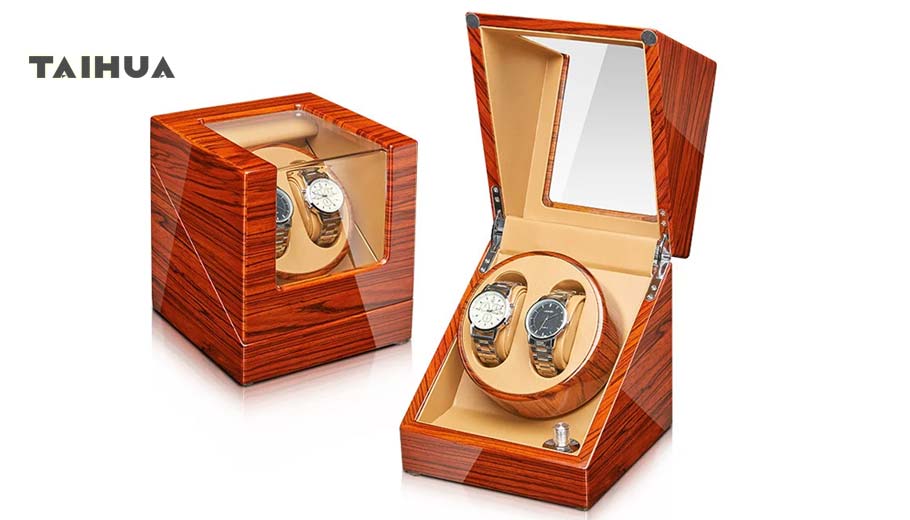Double watch winders:differences between battery-powered and mains-powered

Battery-Powered Winders:
Power Source: Primarily use batteries (often AA or D-Cell) for operation.
Portability & Placement: Offer significant flexibility as they don't require an electrical outlet, allowing placement on desks, nightstands, in safes, or for travel.
Features: Tend to be smaller and more compact, often accommodating one or two watches.
Battery Life: Battery life varies depending on the type of batteries and usage, typically ranging from a few days to several months.
Maintenance: Need regular battery checks and replacements.
Mains-Powered Winders:
Power Source: Plug into a standard electrical outlet via an AC adapter.
Reliability & Continuous Operation: Provide a consistent and uninterrupted power source, ensuring watches remain wound and accurate.
Capacity: Often accommodate a larger number of watches simultaneously.
Features: Typically offer a wider range of customizable options, including rotation direction and speed settings, sometimes independently programmable for each watch.
Placement Limitations: Require proximity to a power outlet, limiting placement options compared to battery-powered models.
In summary:
Battery-powered winders are ideal for portability and flexibility, but require monitoring and battery replacement.
Mains-powered winders offer consistent reliability and larger capacity, but are limited by their need for an outlet.
Our Double Watch Winder offer dual power options, allowing them to run on either battery or mains power, providing the best of both worlds.
